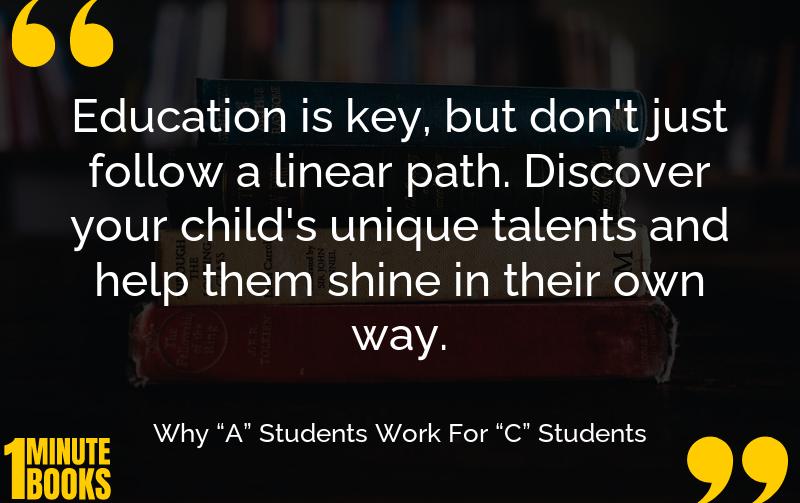
The book argues that the education system favors ‘A’ students as employees, while ‘C’ students become creative entrepreneurs. It advocates for financial education and exploring one’s unique talents over traditional schooling.
Main Lessons
- The education system tends to reward rote learning and memorization over creativity and innovation.
- ‘C’ students often become successful entrepreneurs by thinking outside the box.
- Parents should focus on discovering and nurturing their child’s unique talents.
- Financial education is crucial for achieving long-term success.
- The American Dream is not guaranteed; it’s a pursuit that involves making informed financial decisions.
- Traditional education often fails to equip students with practical financial skills.
- Exploring entrepreneurship can provide freedom and financial independence.
- Job security is diminishing as jobs move overseas and technology advances.
- Learning extends beyond traditional schooling—participation and experience are key.
- The book suggests different quadrants representing employees, small business owners, big business, and investors.
- Inspiring children to focus on assets rather than liabilities promotes financial literacy.
- Generational learning impacts can be harnessed for financial growth.
- Success involves innovative thinking, problem-solving, and continuous learning.
- Understanding different intelligences beyond academics can lead to richer life experiences.
- Nurturing leadership skills from a young age is crucial for future success.








